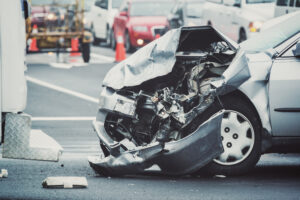
Structural & frame damage: How to know what’s repairable
By onAnnouncements
Are you looking to have structural damage post-collision repaired or have you been in a collision and don’t think your car can be fixed? According to Collision Advice CEO Mike Anderson and Database Enhancement Gateway (DEG) Administrator Danny Gredinberg, damaged vehicle bodies can be fixed if proper repairs are done.
They shared in this week’s Society of Collision Repair Specialists (SCRS) Consumer Tip video that vehicle structures are designed to absorb and divert energy during collisions so returning them to pre-collision condition is essential.
“Because structural damage is a very common occurrence it can be corrected,” Gredinberg said. “Ask your shop, what kind of tools, equipment, and training do they have? If the shop has made the required investment, which can cost a lot of money, structural damage can be fixed correctly following manufacturers’ procedures.”
A recent Kelley Blue Book article outlines what car frames are, what can cause frame damage, how to identify damage, and how to consider repairs.
“Depending on the severity of the damage, frame damage is repairable but insurance companies will usually declare the car a total loss if repairing the frame damage on a vehicle costs more than its value,” KBB wrote.
KBB recommends getting a second opinion other than your insurer on whether frame damage is repairable. A collision repair shop is a good start for an inspection with disassembly to note all damages. However, if your insurance policy has an appraisal clause that’s an option too to determine repairability over total loss from an independent third-party appraiser separate from your insurance company.
“Not every body shop is equipped or knowledgeable enough to return a frame to its pre-accident integrity,” KBB wrote. “Getting the work done right requires training, experience, and the proper equipment. Moreover, many frame-damage events are too severe to restore a fully functional, safe structure. If so, the insurance company will declare the vehicle a total loss. When this happens, you might be tempted to make a deal with the insurance company to keep the car, repair it, and then secure a salvage title to continue using it. However, this tactic isn’t safe. Furthermore, you won’t be able to sell the vehicle to anyone except a salvage yard.”
When total loss is mentioned many correlate it with the end of a vehicle’s life – it won’t be put back on the road. However, during a Collision Industry Conference (CIC) meeting last year, Automotive Recyclers Association (ARA) Executive Director Sandy Blalock and Auto Claim Specialists Managing Director Robert McDorman made it clear that’s not the case. Some cars can be rebuilt safely but there are plenty that aren’t.
McDorman randomly selected 200 total loss claims to use as an example of salvage vs. so-called clear titles. From the sample, 66.5% were titled as salvage and 19% remained in the client’s name with a blue, or “clean,” title, often meaning they’re unbranded and indicate no damage. Many of them are unsafely rebuilt and sold.
As Blalock said, total loss threshold – the percentage at which vehicles are deemed totaled by law – varies by state and not all states have a threshold. And total loss isn’t always based on if the cost to repair the vehicle exceeds its actual cash value. Sometimes, she said, it’s a total loss formula that is used quite often by the collision industry where the cost to repair and the actual salvage value that can be recouped exceeds the value at the time of loss.
If you want to try to get your frame fixed, it’s important to know what type of frame your car has and what to look for as signs of damage.
Modern cars contain a unibody — when the frame and the car body skeleton are manufactured together as one unit, allowing for engineering crumple zones and other safety designs. But more crumpling means more stress on the frame, which can be bent or broken. Pickup trucks and some vans and large SUVs are still sometimes built with the former technique called body-on-frame in which the body is bolted to the frame allowing for more flexibility when towing or hauling.
Frame damage is evident, according to Kelley Blue Book, when there are:
-
- Unusually worn tires
- Diagonal vehicle tracks when moving in a straight line, likely meaning a bent frame
- Poorly fitting panels and parts, including at the door, trunk, and hood seams. Doors sticking or not closing smoothly is also an indication of frame damage.
- Steering pull to one side that continues after wheel alignment.
- New rattles or squeaks as you drive whether alone or combined with the above changes.
The most important thing to remember is that if you’re told repairs are possible make sure the shop you take your vehicle to follows OEM repair procedures, which outline all the necessary steps for repairs and parts replacement according to how each vehicle was engineered.
Images
Featured image credit: shaunl/iStock
